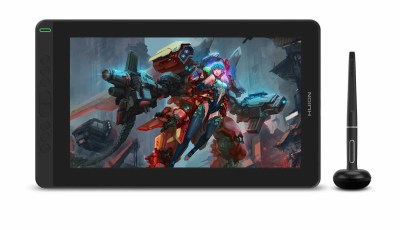CGPress uses technology like cookies to analyse the number of visitors to our site and how it is navigated. We DO NOT sell or profit from your data beyond displaying inconspicuous adverts relevant to CG artists. It'd really help us out if you could accept the cookies, but of course we appreciate your choice not to share data.
The technical storage or access is strictly necessary for the legitimate purpose of enabling the use of a specific service explicitly requested by the subscriber or user, or for the sole purpose of carrying out the transmission of a communication over an electronic communications network.
The technical storage or access is necessary for the legitimate purpose of storing preferences that are not requested by the subscriber or user.
The technical storage or access that is used exclusively for statistical purposes.
The technical storage or access that is used exclusively for anonymous statistical purposes. Without a subpoena, voluntary compliance on the part of your Internet Service Provider, or additional records from a third party, information stored or retrieved for this purpose alone cannot usually be used to identify you.
The technical storage or access is required to create user profiles to send advertising, or to track the user on a website or across several websites for similar marketing purposes.








Question:
Do thinking particles have a physics engine like reactor? Dose TP calculate hulls?
This is the reason of my question:
My curiosity is due to PF’s lack of good collision detection. That is to say I don’t think PF calculates hulls, “right?”
Correct me if I’m wrong but. If you want good collision detection you would use reactor. How ever reactor dose not have an emitter. So to move an object in reactor you use gravity. Sure there’s wind and motor but that will not give an object a trajectory.
I see examples of balls smashing walls down all the time. What is you want a ball to have a trajectory? Like the ark of cannon ball. Then when the ball hit’s the wall this ball brakes not the wall. Then have the ball fragments bounce off secondary surfaces?
You really can’t do it in reactor. You need to take the baked reactor frames into PF and do a collision solution. The problem is the secondary fragment trajectory are not right. Ether reactor needs an emitter or PF needs better collision detection.
So I ask again. Do thinking particles have a physics engine like reactor?
Othoap,
TP5 will definitely have Bullet physics solver integrated.
Chris,
thanks, Will is have a physics engine like havok, nvidia, openGL?
Yes, TP can calculate hulls. It includes 2 physics engines…a PhysX one and it’s own ShapeCollision (which generally seems to work better). As Chris mentioned, the next version will have Bullet which will allow GPU acceleration.
TP is more complicated than Reactor, but gives a lot more control over simulations. There is quite a bit of information about it at the Cebas website…I think there is even a demo version if you want to try out some tutorials.
czurcher, – thanks
So unlike PFlow. TP’s emitted geometry would not penetrate the collision surface.
What is a bullet engine? is it an emitter?
sure, if you set it up correctly, TP emitted geometry will not penetrate the collision surface. Have you tried the demo?
Pflow with box set 2 can do similar things. It also has a demo out…
>What is a bullet engine? is it an emitter?
http://lmgtfy.com/?q=bullet+engine
czurcher – thanks
Systems admin won’t let us install demos. We find “box set 2” really buggy. I was hoping for someones first hand experience with TP in relation to my original post.
Thanks for the google link, that’s cool.
othoap – regarding your original question, you can set an initial momentum on a cannon ball in Reactor by keyframing it moving forward. Start the simulation before the last keyframe and it will apply gravity to the initial trajectory giving you the arc motion.
You may want to look into the Rayfire plugin. It has a lot of great tools for setting up fragmentation scenes. It can be used with TP or with Reactor/PhysX (Bullet in a future version).
From first hand experience, TP is stable and can handle pretty much any dynamics situation imaginable. On the other hand, it has it’s own workflow and the learning curve can be steep. It is often described as being very easy to do difficult things and very difficult to do easy things. I highly recommend trying the demo before purchasing.